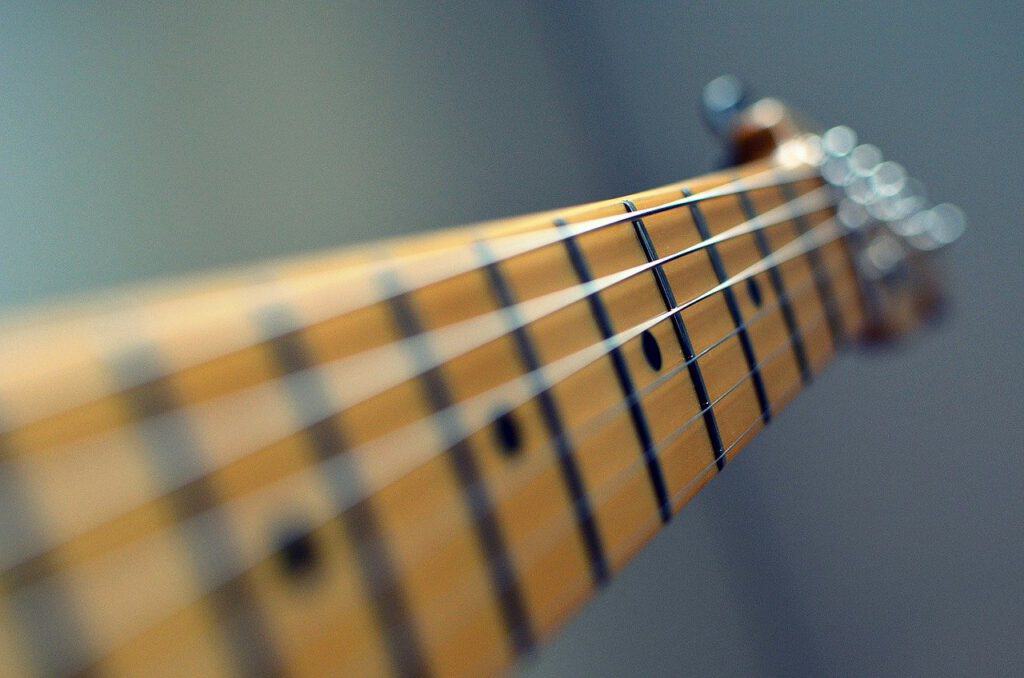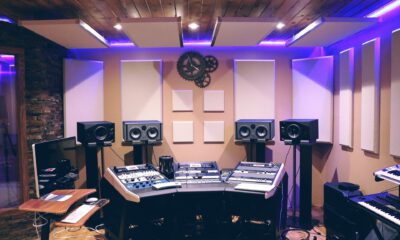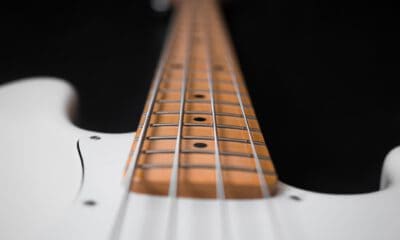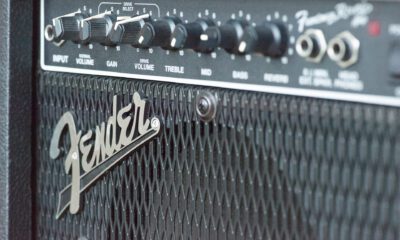Guitar
Is An Electric Guitar Tuned The Same As An Acoustic? (Explained in 2 minutes)

Many people, when they start playing electric guitar, face the problem of how to tune it.
In general, this is even one of the most frequently asked questions by people who are just starting to play electric guitar.
In this article, in under 2 minutes, you’ll learn all about the specifics of an electric guitar versus an acoustic guitar. Also, we’ll look at a few simple tricks you can use to tune your guitar even faster and, most importantly, more accurately.
Is an electric guitar tuned the same way as an acoustic?
An electric guitar can be tuned the same way as an acoustic guitar. The only difference in an electric guitar is that it is harder to hear the notes when the guitar is not connected to an amplifier, but otherwise everything is as usual.
Of course, that’s just the short answer. Furthermore, if you want to know exactly how you should tune your electric guitar now, how to tune your electric guitar for even better music, and much more, then you’ve come to the right place.
The differences between electric and acoustic guitar (when tuning)
To understand the best way to tune your electric guitar, let’s first take a look at the differences between electric and acoustic guitar in general.
What can’t be overlooked, of course…
…an electric guitar has no hole in the body. Instead, the sound is produced by pickups on the guitar and an amplifier.
If you play your electric guitar without plugging in an amplifier, you’ll quickly notice that virtually no sound comes out of the guitar.
You have to get your ears extremely close to the guitar to hear the tones well….
…as you surely know, you don’t have to do that with an acoustic guitar. You can tune it simply by playing the sides one after the other.
But what does this difference have to do with tuning an electric guitar?
How to tune an electric guitar
It’s quite simple. If you want to tune an electric guitar, it will be a bit harder for you at first, since you won’t be able to hear the sides well by themselves.
However, in general, there are 2-3 good ways that you can tune your electric guitar.
But before we look at those ways, let’s first look at what tones we want on an electric guitar in the first place:
What are the tones of an electric guitar? (Normal tuning)
You probably already know the tones, but if not, here’s the sequence of tones for you (from lowest to highest):
E-A-D-G-B-E
Important to know: These are the American notes. Especially in Europe, the notes can differ (for example, the “B” becomes the “H” in many European countries).
In general, however, you can see that the electric guitar in normal tuning covers exactly the same notes as the acoustic guitar.
However, it is also useful and good for you to know that there are also other tunings for electric guitars.
Most important for you is the guitar tuning to “D”. Here everything is tuned 2 semitones lower.
What does a guitar tuning to “D” look like?
D-G-C-F-A-D
Now that you know the 2 main methods of tuning your guitar, we can move on to how exactly you should tune your electric guitar.
The “old” method: Tuning by ear
In principle, you do exactly what you are used to doing with an acoustic guitar.
The important thing is that you connect your electric guitar to the amplifier. Otherwise you will hear the notes too softly at the beginning.
However, if you already have practice playing an electric guitar, you can of course tune without an amplifier.
Pretty unspectacular, isn’t it? But what would you say if there was a way to tune your electric guitar faster and more accurately, and you didn’t even need to hear it?
That would be pretty impressive, wouldn’t it?
The new method: tuning with a digital tuner
Instead of tuning with your own hearing, you can also easily tune with a digital tuner.
The big advantage of tuners over traditional tuning?
You don’t need an amplifier to tune your electric guitar in louder rooms and in public, for example. (Since you don’t need to hear your guitar at all).
You can tune your guitar very accurately. (Smallest deviations that you probably wouldn’t even hear are detected and shown to you immediately by your tuner).
You can tune your electric guitar much faster. (You don’t have to listen twice and three times to see if the guitar is still out of tune. You can rely on your tuner to tell you if your electric guitar is still out of tune.
Now that we’ve looked at the advantages of digital tuners, the question is how exactly they work.
To give you a better overview, you can watch the following video:
How do electric guitar tuners work?
While tuners on cell phones, for example, simply use the built-in microphones to estimate how high your electric guitar is tuned, “real” tuners have extremely accurate sensors built in, which measure the vibration.
So it’s not the sound itself that’s measured, but the vibration that your guitar emits when you play a note.
The advantage of this, as mentioned earlier, is that you are not dependent on a quiet environment. Instead, you can tune your electric guitar virtually anywhere in the world.
It doesn’t matter if it’s at your home (in absolute silence) or at a concert in front of 50,000 cheering people.
Let’s look on amazon.Now that we’ve looked at the two different methods we can use to tune electric guitars, let’s take a quick look at some of the most common mistakes and common questions that always come up in connection with tuning your guitar.
Frequently asked questions regarding electric guitar tuning
Which way is my electric guitar out of tune? (And how do I find out?)
Your guitar can be either too low or too high. If you tune by ear, you’ll have to try it by feel the first few times. Over time, though, you’ll quickly find that you develop a strong gut feeling about which way to tune.
If you use a tuner for your electric guitar, you can easily tell by looking at the level.
With most tuners, you’ll see “exact pitch” of your guitar in the middle. If the level is off to the left, most tuners will tell you that your guitar is tuned too low. If the level goes to the right, your guitar is tuned too high.
In which order should I tune my guitar?
When tuning by ear, you should definitely start with the lowest note (probably either the E or the D) and then tune up.
You can easily use the lower frequencies that are already tuned as a guide. This will make tuning even easier for you.
If you are using a tuner, it doesn’t really matter in which order you tune your guitar, but again, I would recommend tuning from the bottom up. The simple reason for this is that you will then be directly practiced in tuning in the usual order, even without a tuner.
Bonus: What can I do with the tuning pegs on my guitar?
This is a question that, unfortunately, too few guitarists ask themselves. In fact, almost no one knows that you can adjust the resistance of each tuning peg.
The advantage of this for you is that you can decide for yourself how high you want the resistance to be. If you prefer to tune with high resistance, but with a little more power, that’s perfectly okay.
If you prefer to tune with a little less resistance, but with more sensitivity, that’s also perfectly okay.
There is no right or wrong here. It just depends on what your personal preferences are.

Conclusion and summary
Now you know the essential things that matter when tuning your electric guitar.
You’ve learned that it’s not that different from tuning an acoustic guitar, but at the same time you’ve also learned that it’s generally a bit harder to tune an electric guitar.
Now I wish you a lot of fun and above all a lot of success on your further musical way!


 Home Recording2 years ago
Home Recording2 years agoCan You Use Normal Speakers As Studio Monitors? The Simple Answer

 Photography2 years ago
Photography2 years agoIs A Leica Worth It? (What you should know)

 Music Production2 years ago
Music Production2 years agoCan Piano Sheet Music Be Used For Other Instruments?

 Music Production2 years ago
Music Production2 years agoAre My Piano Keys Made Of Ivory? (How To Recognize It)












